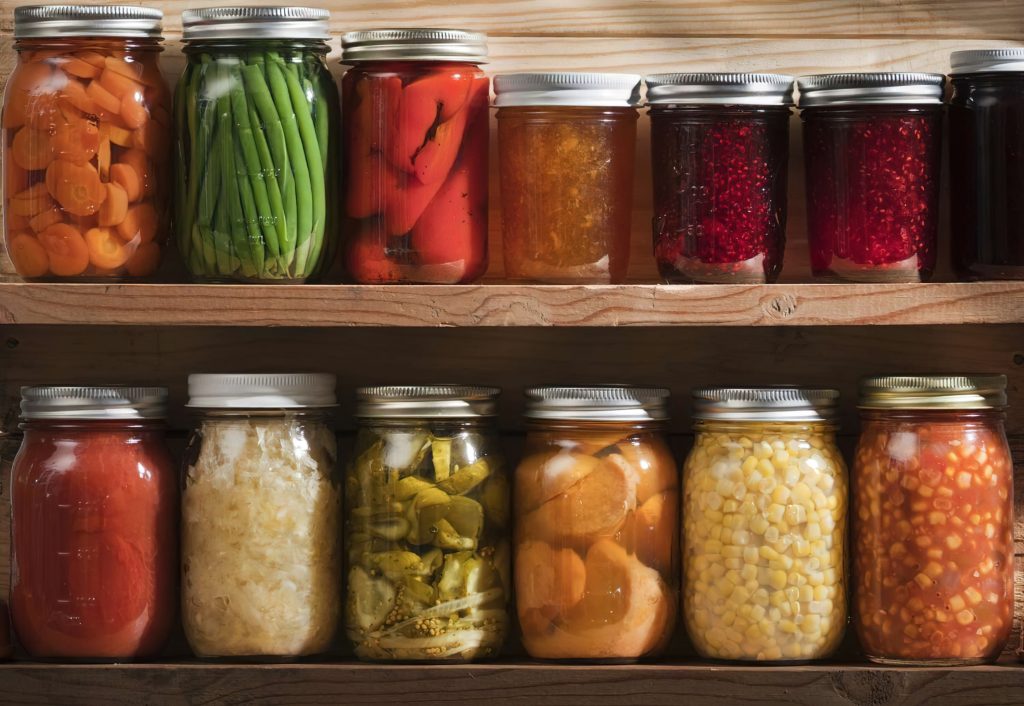Food preservation has been an essential practice throughout human history. From ancient times to modern days, people have developed numerous techniques to prolong the shelf life of food and prevent spoilage. This comprehensive guide will provide an overview of various food preservation methods, their benefits, and tips on how to properly use them.
-
Canning
Canning is a popular method for preserving fruits, vegetables, meats, and even seafood. This process involves placing food in jars and sealing them with airtight lids before heating them to kill bacteria and other microorganisms. Canning helps retain nutrients and flavor, allowing you to enjoy your favorite foods year-round.
Key tips for successful canning:
- Use high-quality, clean jars and lids
- Always follow recipes and processing times closely
- Ensure proper headspace for expansion during processing
-
Dehydrating
Dehydrating removes moisture from food, inhibiting the growth of bacteria and mold. This method is commonly used for preserving fruits, vegetables, and even meats, such as jerky. Dehydrated foods are lightweight and take up less storage space, making them ideal for camping and hiking trips.
Tips for successful dehydration:
- Use a dedicated food dehydrator or oven with a low-temperature setting
- Cut food into thin, uniform pieces for even drying
- Store dehydrated foods in airtight containers
-
Fermenting
Fermentation is a natural process that preserves food through the action of beneficial bacteria and yeasts. This method not only extends the shelf life of food but also enhances its nutritional value and flavor. Common fermented foods include sauerkraut, kimchi, yogurt, and kombucha.
Key tips for successful fermenting:
- Use fresh, high-quality ingredients
- Keep fermentation vessels clean and sanitized
- Maintain proper temperature and humidity for optimal fermentation
-
Freezing
Freezing is a convenient and widely-used method for preserving a variety of foods. By freezing food at low temperatures, the growth of bacteria and other spoilage-causing microorganisms is significantly slowed down. This method retains the taste, texture, and nutritional value of food well.
Tips for successful freezing:
- Use proper freezing containers, such as plastic bags or containers designed for freezing
- Label and date frozen items
- Follow recommended storage times for optimal quality
-
Pickling
Pickling involves preserving food in an acidic solution, typically vinegar or a brine containing lactic acid-producing bacteria. The acid creates an environment in which harmful bacteria cannot thrive, thus preserving the food. Commonly pickled foods include cucumbers, onions, and beets.
Tips for successful pickling:
- Choose fresh, high-quality ingredients
- Follow a tested recipe for the correct vinegar or brine solution
- Use proper canning techniques to seal jars
-
Smoking
Smoking is an ancient food preservation technique that imparts a unique flavor to foods while extending their shelf life. The process involves exposing food to smoke from smoldering wood, which dries it out and adds antimicrobial compounds that help preserve it. Smoked foods include fish, meats, and cheeses.
Tips for successful smoking:
- Use a dedicated smoker or a grill with a smoker attachment
- Choose the right type of wood for the desired flavor
- Monitor temperature and smoking time closely
-
Salting
Salting is a preservation method that has been used for centuries, particularly for meats and fish. By drawing out moisture and creating a high-salt environment, bacterial growth is inhibited. Foods can be preserved by dry salting (coating with salt) or brining (soaking in a salt solution).
Tips for successful salting:
- Use high-quality, non-iodized salt
- Follow guidelines for the correct salt-to-food ratio
- Cure or age foods in a controlled environment
-
Vacuum Sealing
Vacuum sealing involves removing air from a food storage bag or container and sealing it to create an oxygen-free environment. This slows down the spoilage process and helps maintain the freshness of foods. Vacuum sealing is commonly used in combination with other preservation methods, such as freezing.
Tips for successful vacuum sealing:
- Use a vacuum sealer designed for home use
- Remove as much air as possible before sealing
- Store vacuum-sealed foods in the appropriate conditions (e.g., refrigeration or freezing)
Conclusion:
Understanding and mastering the art of food preservation can help you save money, reduce waste, and enjoy a wide variety of foods throughout the year. By exploring different preservation methods and following best practices, you can ensure your preserved foods are safe, delicious, and nutritious. Start experimenting with food preservation today and expand your culinary horizons!

